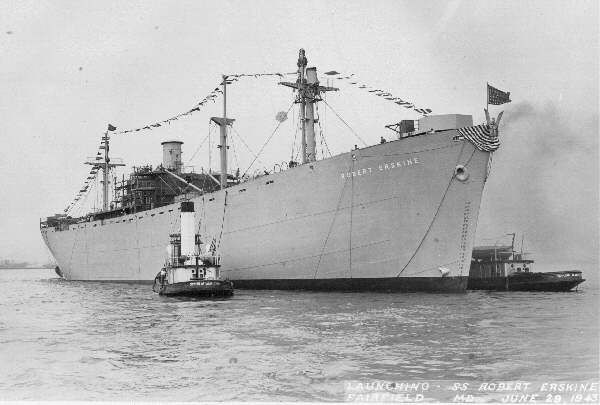During World War II, much of the Allied success at sea depended on the supply chains maintained by the Merchant Marine and the U.S. Navy Armed Guard crews who protected them. World War II Liberty Ships were among the most critical vessels in that supply network, carrying essential freight, troops, and fuel across hostile waters. The lives of the armed guard crews who manned deck guns, anti-aircraft weapons, and lookout posts aboard these merchant vessels remain among the most compelling stories of sacrifice, bravery, and teamwork. Drawing on resources preserved on sites such as “The Ships” page of the Armed Guard website, this article explores the profiles of some of those crews, the role of Liberty Ships during the war, and how remembering these histories matters today.
The Role of World War II Liberty Ships in the War Effort
World War II Liberty Ships were mass-produced cargo ships designed for speed, durability, and function. Built quickly and in large numbers, they served as a logistical backbone for the Allies. Without them, transporting supplies—from food and medical supplies to vehicles and ammunition—would have been severely constrained. These vessels were essential in maintaining supply lines between the U.S., Europe, North Africa, and later in the Pacific theatres. The sheer volume of cargo carried by these ships made them a prime target for enemy submarines, planes, and surface raiders.
Liberty Ships often lacked heavy armament and defensive capabilities of dedicated warships; that was where the U.S. Navy Armed Guard came in. The Armed Guard crews were military personnel assigned to merchant ships in order to operate defensive weapons, manage damage control, maintain watch, and ensure that cargo vessels could survive enemy attacks.
Armed Guard Crew Profiles: Lives at Sea
Armed Guard crews aboard Liberty Ships were composed of sailors trained in weaponry, watch duty, and emergency procedures. Although the ship’s officers and Merchant Marine crew managed navigation, cargo, and engine operations, the Armed Guard men were responsible for defense. These young men—often volunteers or reservists—found themselves facing harsh conditions: cramped quarters, constant vigilance, and the threat of attack from submarines or aircraft.
Their profiles are as diverse as their ships. Some were veteran sailors; others had only basic training. Some came from coastal towns where the sea was life; others had never seen saltwater until joining the Merchant Marine. Regardless of background, all shared a sense of duty: protecting vital cargo and crew, even when danger lurked on the horizon. Posts on the Armed Guard website include lists of Liberty Ships, tanker classes, Victory ships, and others in which the Armed Guard served. They highlight what ships suffered sinkings, what survived, and in which vessels specific crews served. These records reflect not just vessel names, but ports of origin, tonnage carried, and even stories of survival.
Challenges Faced by Armed Guard Crews on Liberty Ships
Serving aboard Liberty Ships was not glamorous. Crews often dealt with monotonous routines punctuated by moments of terror. Navigation across U-boat infested waters, bombings from aircraft above, and the fear of torpedoes lurking beneath the waves were constant threats. Diseases, rough seas, inadequate rest, and exposure to extreme climates added to the burden.
Equipment was sometimes rudimentary. Though Liberty Ships were built fast, they were built with the idea of being expendable. Crews sometimes had to improvise repairs, make do with what was available, or rely on limited medical aid. Despite that, many crewmembers developed fastidious routines in maintenance and watch-standing; their ability to act under pressure saved ships and other lives.
Notable Liberty Ships and Sailors
Among the many Liberty Ships listed on the Armed Guard site are vessels that gained distinction because of their survival or because of specific heroic acts by their crew. While many ships were lost—some sunk in convoys under attack—others became symbols of endurance. Crews aboard those ships are remembered through veteran accounts, photographs, and memorials.
The Armed Guard site preserves information about each ship: what cargo it carried, whether it survived the war, and which Armed Guard crew profiles served aboard. For example, some profiles reveal that crew members stood their posts even when torpedoes hit, extinguished fires under heavy shellfire, or continued to defend the ship after sustaining damage. These stories demonstrate moral courage as well as technical skill.
Legacy and Historical Importance
The stories of armed guard crews and World War II Liberty Ships are more than wartime artifacts. They represent the intersection of civilian and military effort: many of those sailors were civilians stationed aboard non-combatant merchant ships yet served under military command aboard ships that were military targets. Without their contributions, many Allied operations would have lacked the supplies necessary to sustain fighting on multiple fronts.
Today, websites such as the “The Ships” page preserve these histories for scholars, descendants, and anyone interested in maritime history. The detailed lists of Liberty Ships, Victory ships, tankers, and others serve to remind us not just of names and dates, but of human lives under extraordinary pressure. Memorials and records ensure that those brave men are not forgotten.
Why Studying Armed Guard Crew Profiles Still Matters
Understanding the profiles of the armed guard crews helps inform our appreciation of sacrifice. It provides insight into what duty meant for individuals who were far from home, constantly exposed to danger but dependent on discipline, training, and camaraderie. Their stories humanize the massive scale of war logistics.
For historians and educators, these profiles offer concrete data: how many Liberty Ships were built and lost, how many men served aboard them, what routes were most dangerous, how strategies evolved in response to threats. These details feed into broader studies of supply chain resilience, maritime strategy, and technological innovation under wartime pressures.
Conclusion
World War II Liberty Ships and their associated armed guard crew profiles are a testament to human resilience, bravery, and the often unsung courage of those who served in support of larger combat operations. The merchant vessels themselves represent logistical marvels, built at record speed to carry the weight of war’s demands. The Armed Guard crews, meanwhile, stood watch and took action under threat from sea and air. Their joint efforts enabled critical supply lines, turned back enemy attacks, and helped define the outcome of the war.
Preserving their stories through the U.S. Navy Armed Guard sites ensures that future generations understand not just where history went, but how individuals shaped it. As we study Liberty Ships, we must also honor the profiles of those who served aboard them—men drawn from all walks of life, united by service, facing fear, and forging legacies that remain deeply relevant. Remembering their courage reminds us of the cost of peace, the value of cooperation, and the capacity of ordinary people to do extraordinary things.







